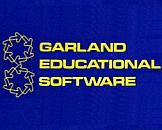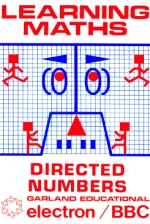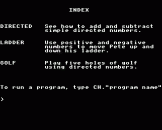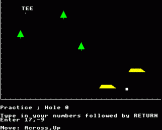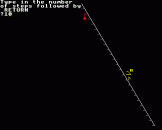Introduction
This series of programs by Chris O' Donoghue is designed for use by children in the lower years of secondary schools or in upper junior schools (9-12), or by parents and children at home. They will also have uses outside these recommended age ranges depending on the ability of the children.
Many children at this age are content to complete a mathematics problem and have it judged 'right' or 'wrong', without any regard for the principles behind it. Many so-called educational programs perpetuate this 'drill and practice' approach, and teachers have rightly criticised this use of computers. We believe that our programs illustrate in an interesting and entertaining way, many of the principles of mathematics at this level. They use animations and simple games - but not frivolous gimmicks. They have been written by a professional teacher, and thoroughly tested in schools. The programs do not attempt to replace the teacher or text-book, but they allow the computer to enrich many maths lessons. At home, they can be used by parents to help with word children are doing at school - or just for fun!
The signs + and - have to uses in mathematics, one as an operator to add and subtract, and the other as a description (as in temperatures, where +4 degrees is warmer than -4 degrees). When used as an operator the sigs must appear between two numbers, e.g. 6-4; when used as a description - as a directed number - the sign must appear in front of the number. Thus -6 has a meaning (minus 6), so does -6-+4 (-6 take away +4), but -6 has no meaning (what do you take -6 from?).
The Programs
DIRECTED shows graphically simple additions and subtractions involving two directed numbers. Despite the fact that only two small numbers can be used because of the limitations of the screen, the program brings these routine calculations to life.
LADDER is a simple game which demonstrates what directed numbers are, and why the word "directed" is used: +7 directs Pete up his ladder and -7 directs him down. Don't let him drop his paint-pot!
Golf is a game to practise the use of directed numbers. It is not easy to play at first so you are advised to read the program's instructions carefully, and notice the significance of the numbers you enter in the practice round.
Here is a little more help: If you want the ball to head for the top right of the screen, enter 12,8 (press RETURN). The 12 refers to 12 of the divisions on the scale at the bottom of the course. To move to the bottom right, enter 12,-8 (RETURN). Notice that the -8 takes you downwards. To move to the top left, enter -12,8 or to the bottom left -12,-8. These exact figures may cause you to hit a tree (!) since each course is slightly different, but the signs should help too. Please not, too, the unusual playing order which is to share the cheating fairly! Although cheating cannot be condoned, it does give you practice at adding directed numbers.
